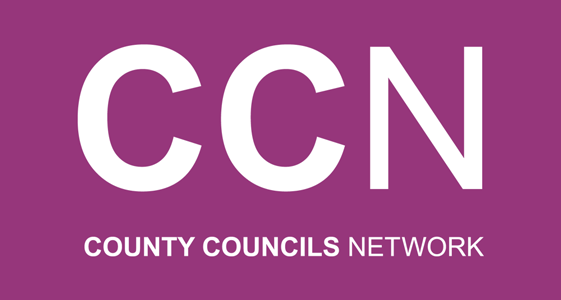
CCN Blogs | 26 October 2018

Mobile connectivity is no longer a luxury or fashion item. Today, it is an essential part of daily life; in fact, 95% of adults own a smartphone and there are 92 million subscriptions to the mobile networks. Mobile use has changed dramatically. While we still use phones to make calls, we spend more time using the data connection to run our businesses, access social media, bank accounts or to do our daily shop. Councils rely on mobile networks to enable residents to access services and for officers to work off-site remotely or, with the advent of faster 4G and 5G technologies, to introduce smart lighting or refuse collection, as well as improved residential care. One report suggests councils could regain up to £2.8 billion through better productivity and new digital ecosystems while the wider benefit to the economy of 4G and 5G could be an additional of £18.5 billion.
Mobile companies are investing heavily to meet growing demand and to prepare for the next generation of mobile technology. Annually they invest £2 billion enhancing and extending their networks. Ofcom recently reported that all four operators provide calls coverage to 92% of UK premises, while 4G premises coverage, only initiated in 2013, stands at 76% (up from 64% in June 2017). Over the last six months operators have added 4G coverage to an area equivalent to the size of Wales and only 0.2% of premises do not have coverage from any operator. Yet this is not the end of the story. Mobile operators continue to invest and will start to deploy 5G networks from 2019. However, building and deploying these networks cannot be done without the active participation and assistance of local councils.
Installing mobile networks and ultimately extending coverage and capacity is a complex process with many stakeholders involved. Sites must be identified, agreements with landlords made, power and fibre laid down, planning applications submitted, consultations conducted, masts and antennas installed, and mobile signals optimised.
This means that, at the very outset, Local authorities can better support mobile by including it within their strategic thinking, which is mostly lacking at the moment. Considering mobile connectivity up front is the best way to ensure that connectivity is there when it’s needed, not added as an afterthought.
Secondly, coverage could be so much easy to deliver if there was easy access to well-placed council assets. The Cabinet Office recently published a toolkit that simplifies the process of operators and public bodies coming to site agreements. This would be so much better than the current position whereby the process is hampered by bureaucracy and a desire to gain the highest rental value so that public assets. Furthermore, the revised National Planning Policy Framework recognises the critical importance of mobile connectivity to local economies, which ensures the right balance can be struck support when mobile masts, especially in harder to reach areas, come up against planning opposition
Mobile UK strongly believes that partnership with councils can and will create an environment where barriers to extend and enhance coverage can be broken down and solutions found. Already, new partnership models are emerging. Cambridgeshire and Peterborough Combined Authority, through its Connected Cambridgeshire initiative, has, with political support from its mayor and a fully funded delivery team, created a barrier-busting team to work with the industry and set itself as the point of contact to coordinate wayleaves, street works licenses and planning. North Yorkshire County Council, the largest rural county in England, created the role of “Programme Manager – Mobile Phone Coverage” to coordinate its efforts to improve mobile connectivity. The Council has been granted £1m from the York, North Yorkshire and East Riding Enterprise Partnership’s Local Growth Fund to support improvements in mobile infrastructure via a 4G infill programme where there is no mobile signal from any one operator. And Norfolk County Council created its Digital Innovation and Efficiency Committee to improve digital connectivity. The Committee assessed how the new Electronic Communications Code would affect income from telecommunications equipment on the council’s property estate and concluded that while it may lead to a reduction in income, reduced rents may open new sites for mobile operators that were not previously economically viable. The decision was to apply new rates quickly to allow operators to commit to new sites.
The industry, via its Building Mobile Britain campaign and recently published report Councils and Connectivity, is actively working with Council’s and looking to build closer relationships. The industry is calling on Councils to show political leadership and stronger prioritisation of mobile connectivity within its strategic planning and where relevant to seek new innovative partnership and investment models to recognise that where areas are uneconomic or the most difficult to reach other models should be considered. Our report makes recommendations and offers guidance for how mobile network operators and local government can collaborate to create an environment that encourages the build of mobile infrastructure.
Hamish MacLeod, director, Mobile UK
© 2024 County Councils Network | Credits | Site map | Cookies | Privacy Policy.